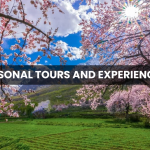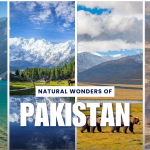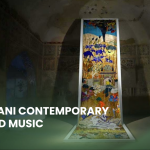Historical Trade Routes and Caravansaries: Retracing the Path of Civilizations
For thousands of years, what is now Pakistan stood at the crossroads of empires, trade, and culture. Crisscrossed by ancient trade routes, this region linked Central Asia, China, the Middle East, and the Indian subcontinent. Merchants, pilgrims, and conquerors all passed through, leaving behind a rich heritage of caravansaries, cultural exchange, and trade cities.
Today, these routes tell stories of commerce and coexistence, and travelers can retrace these historic trade paths through immersive tours that bring the past to life.
The Silk Road: Pakistan’s Link to the Ancient World
The legendary Silk Road was not a single road but a vast network of paths connecting East and West. One of its most scenic and strategic segments passed through Pakistan’s northern mountains, including Hunza, Gilgit, and Skardu, all the way to Karakoram Pass and Khunjerab Pass on the Chinese border.
Along this route, traders moved silk, spices, gemstones, and ideas. Buddhism, Islam, and even Greek philosophy found their way along this trail, making it as much a cultural highway as a commercial one.
Travel Tip: Join our Hunza Valley Tour, which takes you from the Karakoram Highway to Hunza’s historic forts, ancient rock carvings, and old trade villages like Ganish.
The Khyber Pass: Gateway of Invasions and Exchange
Perhaps no trade route is as steeped in history as the Khyber Pass. This narrow mountain pass near Peshawar connected Afghanistan to the Indian subcontinent and was used by everyone from Alexander the Great to the Mughals.
It wasn’t just a corridor for armies, it was a lifeline for Silk Road traders, Sufi saints, and pilgrims. It also played a vital role in spreading Gandharan culture and Greco-Buddhist art, as seen in the nearby Taxila and Takht-i-Bahi.
Travel Tip: Explore our Peshawar Tour, including the Khyber Pass Museum, historic Peshawar markets, Bala Hissar Fort, and nearby Buddhist ruins.
The Indus River Trade Route: Lifeline of Ancient Civilizations
Flowing over 3,000 km from Tibet to the Arabian Sea, the Indus River has been a vital trade artery since 2500 BCE. The Indus Valley Civilization flourished here with cities like Mohenjo-Daro and Harappa, connected via riverboats carrying grain, textiles, and ceramics.
Later empires,from Mauryans to Mughals, used the river for transport, irrigation, and commerce. Today, cities like Multan and Sukkur still echo with this legacy through their old bazaars, river ports, and caravan stops.
Travel Tip: Our Indus Civilization Tour covers Mohenjo-Daro, Multan’s shrines, and ancient river trade ports. Perfect for history buffs and archaeology lovers.c
Caravansaries: The Roadside Palaces of Traders
Travelers and merchants needed more than roads, they needed rest, security, and food. Enter the caravansary: fortified inns where traders could sleep, store goods, and exchange news.
Pakistan hosts several well-preserved and forgotten caravansaries, especially along the Grand Trunk Road. These were often funded by emperors or wealthy patrons and sometimes became mini-markets and cultural melting pots.
Famous examples include:
- Serai Kharbuza (Islamabad region) – Mughal-era rest stop
- Shahi Serai (Lahore) – Connected to Wazir Khan Mosque complex
- Multan Caravanserais – Linked with silk and cotton trade
Travel Tip: Our Caravan Routes Tour explores these historic inns with expert guides who narrate tales of old merchants and empires.
Trade Routes and Key Regions
Route | Key Regions | Historical Significance |
Silk Road | Hunza, Gilgit, Khunjerab | Linked China to South Asia; route of silk, ideas, and art |
Khyber Pass Route | Peshawar, Takht-i-Bahi | Military & trade gateway; spread of Gandhara culture |
Indus River Route | Mohenjo-Daro, Multan, Sukkur | Lifeline of ancient trade; river commerce and agriculture |
Grand Trunk Road | Lahore, Multan, Rawalpindi | Mughal-era road with key caravan stops and cultural towns |
Why Travel These Routes Today?
Following these ancient trade paths today is more than tourism, it’s a way to:
- Connect with diverse cultures
- Understand Pakistan’s central role in global history
- Visit archaeological and architectural wonders
- Support local crafts, stories, and communities
Our Historic Trade Route Tours are perfect for cultural enthusiasts, history lovers, educators, and slow travelers.
✅ Expert-guided storytelling
✅ Comfortable transport and heritage stays
✅ Visits to UNESCO and heritage sites
✅ Opportunities for local shopping and community interactions
Step Into the Footsteps of Traders, Kings, and Saints
From the snow-capped mountains of Gilgit to the bustling bazaars of Multan, Pakistan’s historic trade routes offer an unforgettable journey through time. These paths shaped civilizations, carried religions, and nurtured commerce—and they await rediscovery.
📍 Start your historic trail adventure with Guide Tourism Pakistan.
Whether you’re walking the Silk Road, exploring a Khyber fortress, or sipping tea in a forgotten caravansary, every step tells a story.



